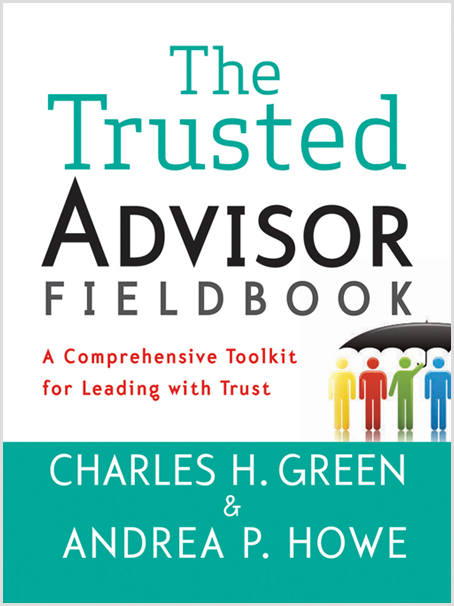This post is part of our Monthly-ish Tips series.
~~~~~~~~~~~~~~
General note to our Weekly Tips readers: Due to the current state of the world, I’ll be tailoring the Weekly Tips series in a variety of ways. Many tips will focus on specific suggestions given our current context. Some may offer more intentional “business as usual” tips as a way bring momentary relief via a small dose of normalcy. Occasionally a tip may be pre-loaded that suddenly seems irrelevant or inappropriate given breaking news and we won’t catch it in time, in which case I thank you in advance for your grace.
Above all else please take extremely good care of yourselves and others right now.
~~~~~~~~~~~~~~
 With the massive influx of webinars and articles on “the top seven ways to work better as a virtual team,” I’m opting to go granular this week by sharing a simple trust-building meeting practice that works with groups as small as two and as big as forty—whether you’re virtual or in-person or some combo.
With the massive influx of webinars and articles on “the top seven ways to work better as a virtual team,” I’m opting to go granular this week by sharing a simple trust-building meeting practice that works with groups as small as two and as big as forty—whether you’re virtual or in-person or some combo.
The practice is called a one-word check-in. I didn’t invent it, though I wish I had and don’t know who did. I first practiced it in graduate school. It was a routine way that our professors had my 14-person cohort “get present.”
If your woo-woo alert just went off, hang in there. The one-word check-in is one of the simplest yet most effective and efficient ways I know to begin group meeting or conversation, especially in times of great stress and when we’re limited to virtual meetings (sound familiar at all?).
Here’s the version of it that I recommend be used right now, in particular because it does two important things from the get-go: (1) gives you a sense of how everyone is doing and (2) gets everyone’s voice “in the room”:
By the way, the “describe how you are” wording is intentional. Some people find that more accessible and less off-putting than “describe how you are feeling.”
Having run this little exercise hundreds of times, here are seven suggestions for making the most of it:
- Prompt for responses via roll call for efficiency if you’re doing this virtually. You can go in order of first name or of appearance on the participant list (the latter makes it easier to include late-comers as it’s usually in order of arrival).
- Have people actually vocalize their word if at all possible. I like this approach about 1,000 times better than doing some kind of generalized poll. It’s that much more personal, which is a big part of the point. If you have so many on the line that you can’t afford to unmute everyone for this opening, then get creative. Asking people to enter their replies via chat still offers an opportunity for all to engage.
- Keep the flow moving while continually nudging towards the one-word norm. If someone offers two to four words rather than one, don’t take time to correct them; just say you’ll hyphenate the words. If they reply with a long sentence, ask them to condense it, or reflect back the key word or two that you heard to help them distill what they’ve expressed.
- Repeat each person’s word before moving on. That way each person feels heard, plus it maximizes the chances that everyone will have heard what was expressed.
- If someone’s word is particularly strong and potentially distracting for them or others, pause. If a group member says, “Devasted,” for example, you could follow (sensitively) with, “Devastated. Thank you for sharing that. Is there anything about your word that’s important for us to know before we continue?”
- As the leader/convener, share your own word. You can role model by being the first to share (and share honestly). Or you can give space for others to go first, and then add yours. Either way, you’re part of the group, too.
- Acknowledge any themes once everyone has spoken. You might say things like, “I’m hearing a mixture of anxiety and hopefulness,” or, “It sounds like we’re all dealing with a lot right now, which I can understand and appreciate.”
Variations of the one-word check-in are endless, and can be used for a variety of purposes. Try using it later in a meeting, for example, to quickly gather feedback—as in, “If you were to describe your reaction to (topic name) in one word, what word would you choose?”
You can also book end by asking, “How are you, in one word, as we close out today?” In times like these I think it’s especially helpful to see how people are when they’re leaving an interaction. We had a team meeting the other day where we started with words like “surviving” and “managing” but felt buoyed by our collaboration, so our words were considerably more optimistic when we disconnected. Calling attention to that made a difference.
Trust is often built with small gestures. I really like the one-word check-in because it’s a small gesture that packs a big punch by accomplishing a lot of important things at once.
Make It Real
This week, try using the one-word check-in to open a meeting. What do you discover?
Learn More

Speaking of words, watch a short video on the two most trust-destroying words (#11), from our friends at Trusted Advisor Associates, or brush up on why familiarity is so important when working at a distance in Chapter 27 of The Trusted Advisor Fieldbook.
